As I’ve mentioned before, I’m very interested in the quantified self; or, more simply, gathering data about myself. I have lots of data from a couple years of wearing smartwatches—data about my heart rate, sleep patterns, walking, bike rides, general exercise, and so on. I also have electronic data from scales, blood pressure devices, DNA testing, and blood tests.
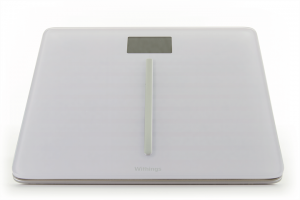
One of the challenges I’ve encountered over the years has been that this data comes from a variety of sources by vendors whose products don’t really play well together. That is why I was very interested in the array of monitoring devices from Withings.
I have over two years of weight data from two different Withings scales (the $129.95 Body and the newer $179.95 Body Cardio). I also use Withings’ blood pressure and temperature monitors. These devices do a wonderful job of showing the promise and frustrations of the current generation of self-monitoring hardware and software.
Both of the Withings scales are attractive and work well as scales. They also automatically transmit the results over WiFi so that it is available on my smartphone app or the Withings website. I stumble out of bed each morning and groggily stand on the scale for about 15 seconds. The scales measure some additional things beyond my weight, and gamely tell me exciting information about how many steps I took yesterday and the predicted weather for the day. Those things may be interesting to some folks, but I just want to get off the scale as quickly as possible and grab my coffee.
Fortunately, I don’t have to remember my weight or write it down. When I lose weight, my iPhone Withings app congratulates me on my new low weight and, if I fail to do so, encourages me to keep up the weight loss effort.
Where each of the scales doesn’t work as well is with some of their more sophisticated metrics. Heart rate in particular doesn’t work well for me on either scale. Most days the readings seem about right (in the 60s or 70s), but some days the number will be way too high, and other days it gets no reading at all. Whenever the scale has reported that my heart rate was over 120, my watch has said the scale was way off. Maybe it’s because the scales measure heart rate from your feet and my feet are too callused or something—who knows? –but these inconsistencies mean I no longer trust what the scale says about my heart rate.
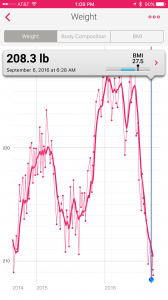
The body fat and water percentage readings seem more consistent, but I don’t know how accurate they are. I do know that when there was a software update for the Body scale, my numbers changed noticeably. That did not instill confidence.
On the Body Cardio, the pulse wave velocity technology suffers similar problems. Withings touts this as a way to “to follow heart health at home” and claims that pulse wave velocity is “recognized by the medical community as the best stand-alone indicator to provide a reliable assessment of overall cardiovascular health.” The problem is that I get a valid result only one or two days a week. As a consequence, I now skip those measurements most mornings. I don’t want to wait for something I can’t rely on and getting my weight takes only a few seconds.
Being able to easily and accurately track my weight, however, is enough reason to use one of these scales. Based on real data from the last couple years, I know that when I stop riding my bike in the next few weeks and the holidays start, I really need to be careful, because the pounds start to accumulate very quickly. We’ll see whether that knowledge is of any help this year!
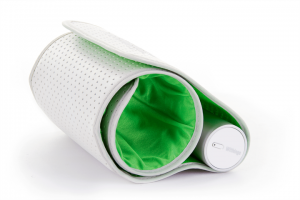
While the weight data is interesting, I really want to be able to correlate this information with things like heart rate and blood pressure readings. Unfortunately, there is no good way to do that, even when the products are all from the same vendor. There is no straightforward way to correlate my weight and heart rate data from my Withings scale, let alone combine that information with the more voluminous and accurate data from my Garmin vivoactive HR (my current favorite smartwatch) or my Microsoft Band 2. The only answer I currently have is that this kind of centralization is impossible, unless I create my own spreadsheet.
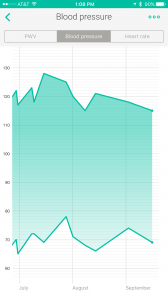
The $99.95 Withings Wireless Blood Pressure Monitor looks like a slightly more modern version of a typical blood pressure cuff—minus the actual gauge. I found it easy to use and its results consistent with those from other sources.
It has several modes, but I have been using the one that takes 3 measurements 60 seconds apart and reports the average. The claim is that this is the most accurate way to measure blood pressure. It takes about 5 minutes in total and handles everything for you. I just read or do email on my iPad. (Hopefully those emails are not affecting the results too much!) The device is powered by a rechargeable battery that I have not yet had to recharge.
The Withings app receives the data via Bluetooth, stores it, and can even share it via email with your doctor. The app does a decent job of displaying the stored data. You can also use the Withings website to look at your data from both the blood pressure and scale.
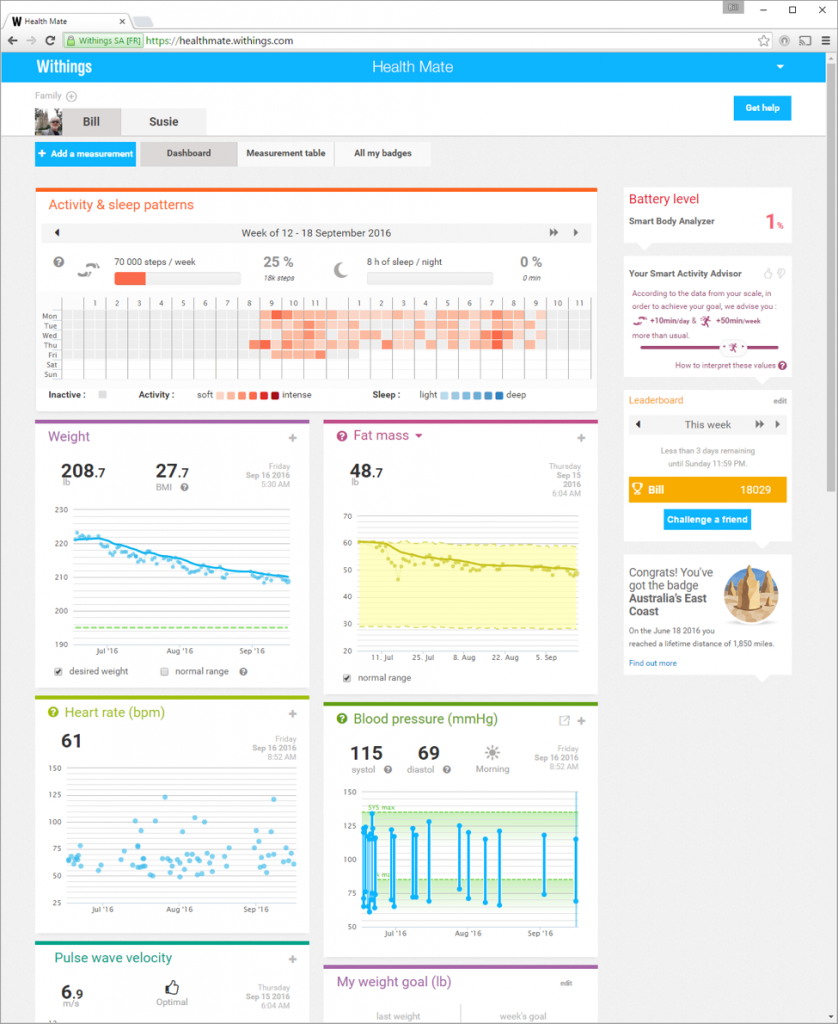
The $99.95 Withings Thermo is a device that determines someone’s body temperature. A quick brush across the forehead is enough to get a reading. The readings seem accurate, and the monitor is FDA approved. On the plus side, the app keeps track of readings for multiple family members and even provides some context for the measurements. Given how easy (and non-invasive) it is, I really wish I had owned this when my children were young.

The Thermo, however, is a great example of the problems I face even within the family of devices from Withings—it uses a different app from the scales and blood pressure monitor, and the data is not integrated with any of the other devices. Admittedly, body temperature is most likely something you care about when you or someone else is sick, but why have a separate app? As with all of this, correlation of data could be interesting. For example, does my blood pressure rise as my temperature does?
Looking beyond Withings, I have data in a slew of apps and websites. I use MyFitnessPal to track my food intake. In the Withings app, I store my weight, heart rate, and blood pressure information. Other data is in my Apple Health app, my Microsoft Band app, and my Garmin Connect app. And so on. I wish they would talk to each other! And, forget trying to exchange data with my doctor’s Healow app.
There may well be enough health data about me to be a big data problem, but nothing treats the information that way.
I remember reading that when the first Microsoft Band debuted, it would have the ability to correlate its data with your calendar. I was excited about the possibility of being able to see that your heart rate was always lower after a vacation or spiked when you met with your boss. Unfortunately, Microsoft has yet to deliver on that promise; so have all the other monitoring device and software vendors I deal with.
In the meantime, I will keep gathering data from my existing devices as well as new ones. Eventually, the promise of data sharing and correlation may come to pass.





